READY TO GET STARTED?
REQUEST A FREE ESTIMATE
Fill out the form below or call (888) 466-7849 for a free, no-obligation estimate.

Just like the weather changes with each season, so do the pests that we see. Some pests prefer warmer weather and peak in spring and summer while other pests will surge in the winter as they come inside to get out of the cold. The ways that you prepare your home will depend on what time of year it is and what pests you are preparing for. We have provided you with a few of the most common pests for each season so you can be better prepared all year long.
Springtime brings about an increase in temperatures, the melting of ice, and the blooming of flowers. These warmer temperatures bring many pests out from their winter hiding places. As these animals emerge they will have one thing on their minds – food and water! Spring is also mating season for many species. Here are some common spring pests to look out for:
While we get somewhat of a break from pests in the summer months, there are a few species who peak during this hot season. Summer is typically the time in many pests’ life cycles where they are maturing and are less of a threat to humans. Here are some common summer pests:
Fall brings about cooler temperatures. This is the time of year when pests start to prepare for the upcoming winter. Many pests will start to seek warmth and shelter inside our homes. Here are some common fall pests:
While many pests hibernate or become dormant over the winter, don’t relax just yet! There are still many pests that we see in larger numbers in the winter months as they make their way into our home to avoid the harsh cold weather. Here are some common winter pests:
As you can see, no two pests are alike and no two seasons are alike. In the same manner, one universal pest control method won’t work for different pests or for different seasons. It is important to know which pests thrive during which seasons so that you can better prepare your home year round to prevent an invasion. If you suspect that you have a pest problem in your home, contact a professional pest control company who can provide you with a thorough evaluation and set you up with a comprehensive treatment plan.
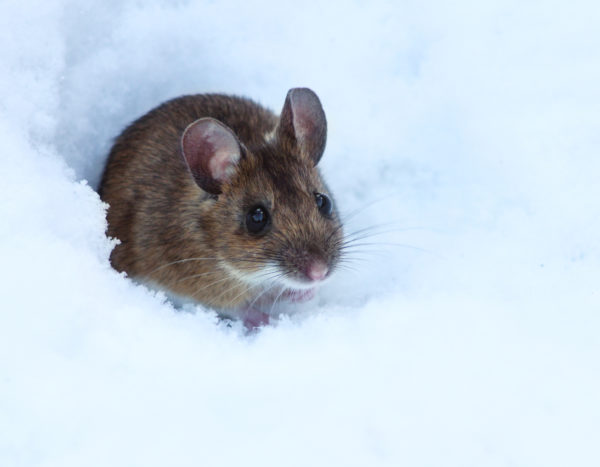
During the colder months of winter, most of us like to stay bundled up and warm – with warmer clothes and inside our cozy homes. Unfortunately, many animals also seek this same shelter and warmth in the winter – oftentimes in our homes! Do you know which animals can cause problems for you during these colder months? What can you do to prevent them from seeking shelter in your home? Check out these common winter wildlife pests and 6 ways you can prevent them.
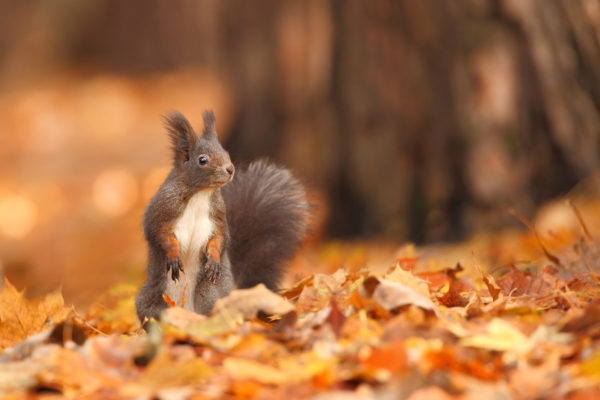
Squirrels can be a problem year round. They don’t hibernate in the winter and stay very active. They like to seek shelter and warmth in attic spaces. They may also seek out your attic as a storage space for their winter stash of nuts, grains, and seeds so they don’t have to search for food in the cold winter months. Squirrel nests are easy to spot in the winter in bare trees. Squirrels are notorious chewers – so if you have them in your attic you can expect your wood, insulation, and electrical wiring to suffer damage.
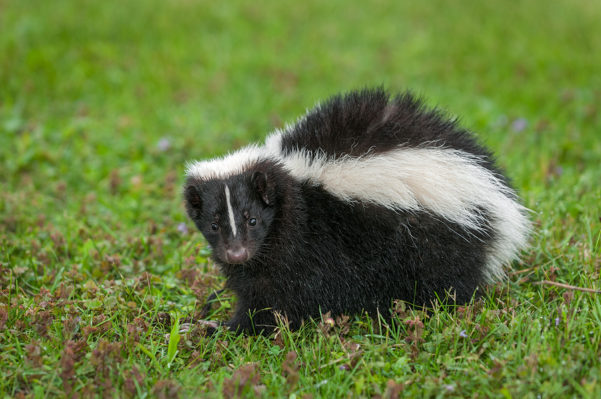
Skunks live in the same areas during the winter as they do in the summer. They like to burrow under our decks, patios, and stoops. Skunks don’t technically hibernate, but they do lower their body temperature and heart rate in the winter to conserve energy and therefore become less active. They can go up to a week without food and water but will venture out on a semi-regular basis in search of sustenance. They live in larger communities in the wintertime for warmth.
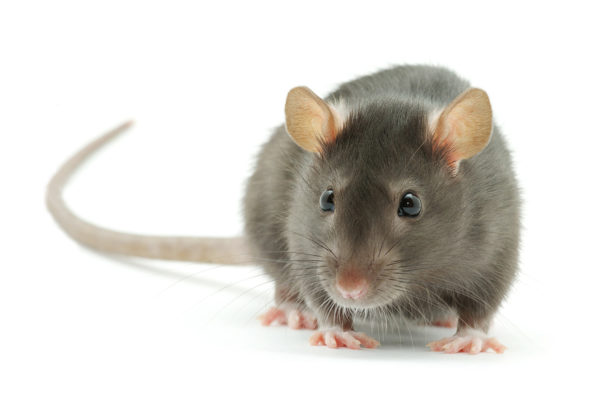
Rats and mice are also year round pests but they can become more of a problem in the winter. These rodents seek out warmth, food, shelter, and water inside our homes during the harsh winter months. They can squeeze into your home through extremely small openings. Like squirrels, they are also notorious for chewing through insulation, wiring, and wood.
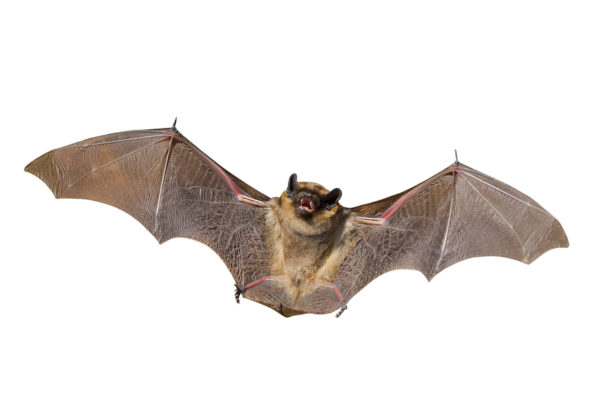
There are at least 40 different species of bats in the United States. Bats are mostly active in the summer months and will hibernate in the winter. They will, however, hibernate in your attic! Bats like to roost in attics, belfries, behind shutters, and loose boards. They are carriers of rabies and can spread disease.
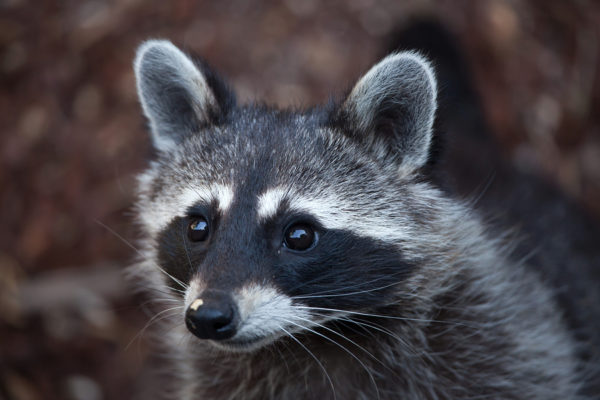
Raccoons are nocturnal and rarely seen during the day. Raccoons can cause significant damage to roofs and chimneys in their search for den sites. They will also get into crawlspaces in search of den sites. They are a major carrier of rabies.
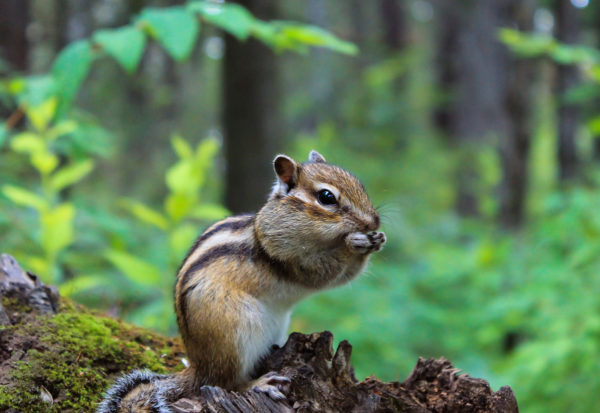
Chipmunks are like squirrels in that they gather and store their food in the fall. They are less active in the colder weather, lowering their body temperatures and heart rates to conserve energy. They usually make their nests in underground burrows that can be up to 10 feet long. They will venture out every few days to eat, drink, and go to the bathroom. Oftentimes they will use attics as a storage space for their winter stash.
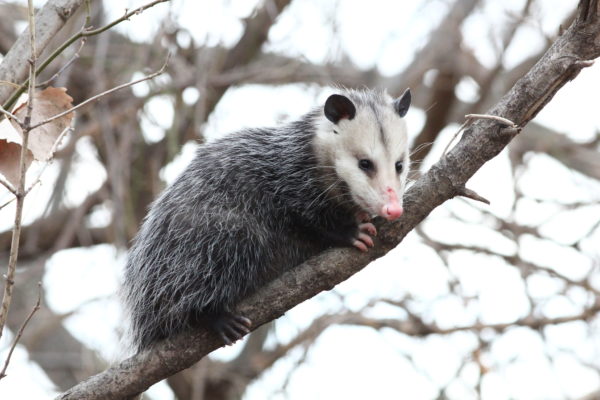
Opossums are the only marsupial found in North America. They will occasionally make their dens in attics and garages. They are known to make very messy nests. Opossums have very sharp teeth and will show them, as well as hiss, when they feel threatened. They are known to bite in very rare cases.
Winter wildlife can be a problem especially if they build a nest or store food in or near your home in the wintertime. The cold weather also doesn’t eliminate the diseases that they carry and spread. If these pests get into your home they can cause significant damage to your roof, insulation, foundation, wiring, and more. What can you do to prevent winter wildlife from making your home theirs? Check out these 6 tips to prevent winter wildlife.

Even though we’re well into the winter season, it’s never too late to weatherproof your home. These easy fixes will not only seal up your home and keep it nice and warm, they will also help save you some money on your energy bills this year. Check out these simple winter weatherproofing tips so you’ll be prepared just in case the groundhog DOES see his shadow this year!
Check your doors and windows to make sure they are in good repair. Insulate your doors and windows with weatherstripping. Use transparent weather sealant tape for any areas where the weatherstripping will be applied directly to the door or window. This tape can also be used to temporarily seal any cracked windows until you can permanently replace them. Use door sweeps on the bottoms of exterior doors to keep cold air from coming in. You can install them with nails or with adhesive.
Attics and crawlspaces are notoriously cold areas of your home. Thermal accoustical pest control (TAP) insulation is an energy star rated attic insulation that provides several benefits to your home. TAP eases the burden on your heating and cooling systems, making them more efficient and keeping the temperature in your home more consistent throughout the year. TAP also leads to a 20-38% savings on your energy bills AND protects your home against pests including roaches and ants. Finally, TAP is treated with a fire retardant that limits the spread of fire in your home.
Complete CrawlSpace enclosure is another way to weatherproof your home. Enclosing your crawlspace with Complete CrawlSpace increases energy efficiency, prevents mold growth, and completely closes off your crawlspace to pests. This can also save you up to 18% on your energy bills each year.
Most garages aren’t insulated which makes them very chilly spaces in the winter. Install weather sealing strips on the bottom of your garage door. These strips not only keep out cold air but also keep out rain and pests as well.
Outlets and switches on the exterior walls of your home can be a big source of cold air. One solution is to install foam outlet and switch sealers. These can be installed by simply turning off the power, removing the outlet or switch cover, applying the foam sealers, and reinstalling the covers.
Hardwood and tile floors can be especially cold in the winter. Curtains and rugs can make a big difference when it comes to heating your home. if you have drafty windows, hang some heavy curtains to keep the cold air out. Use area rugs on hardwood floors and in bathrooms with tile floors to help keep them warm.
Air conditioning units in walls and windows give a direct path for cold air into your home. One solution is to install a heavy duty polyethylene and vinyl cover that fits around the outside of the unit. You can also wrap the inside grill with plastic sheeting and double sided tape. Consider installing a programmable thermostat which will automate your interior temperature. This can save you up to $200 per year in heating and cooling costs.
Insulate your hot water heater with a water heater insulating blanket. This saves energy by reducing heat that is lost through the sides of the hot water heater by 25-40%. This reduction in heat loss can also lead to savings on your energy bills.
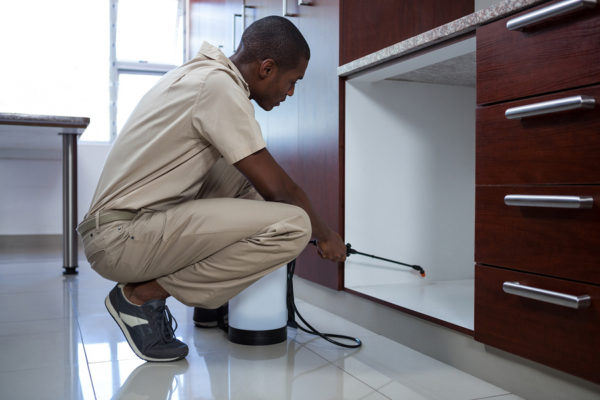
Now that the holidays are over, it’s time to start looking ahead to the New Year. Like most of us, you’re probably going into 2018 with a renewed sense of motivation. What is your New Year’s resolution? Will you try to lose weight? Will you try to spend less time online and more time outside? Will you finally finish that project you’ve wanted to start but never had the time? Whatever you decide, make sure pest control makes it to the top of your list. Here are 5 easy tips to make your home pest free for the New Year!
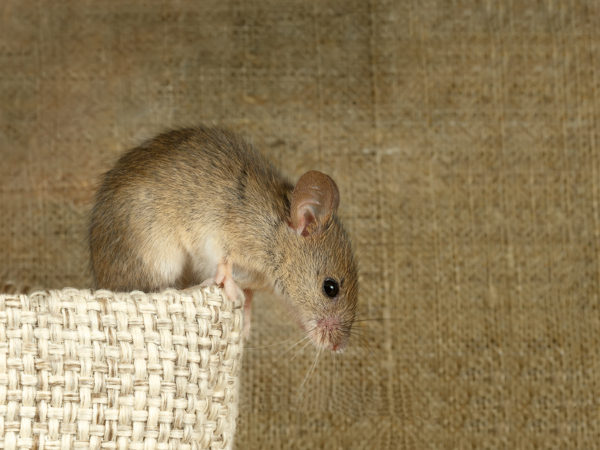
Rodents are one of the most common pests that come into our homes in the winter. Rodents are in search of 3 things – food, water, and shelter – and they can find all 3 of them in and around our homes. Squirrels, raccoons, rats, and mice are some of the most frequently seen rodents in the colder months. Rodents can cause significant damage to property and can also be a big health risk to humans. Prevention is critical in managing and preventing an infestation of rodents. Check out these tips to keep the rodents out this winter:
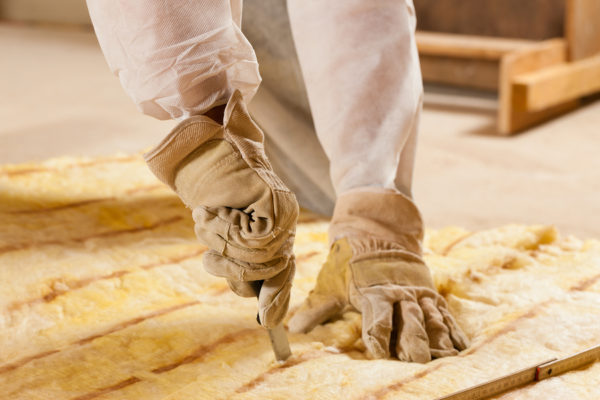
Have you ever wished you could keep your house warmer in the winter and cooler in the summer? Have you ever looked at your electricity bill and wished you could lower your payment? Have you wondered if there was something more you could do to keep pests out of your home? What if there was a product out there that could do all of these things and more? TAP (Thermal Acoustical Pest Control) insulation is energy star-rated attic insulation made of 87% recycled newsprint. TAP insulation all of the following benefits for your home:
TAP insulation is like a “blanket for your home.” The fibers in the insulation are dense enough to prevent air flow but still light enough that they can trap heat. This is especially beneficial during the winter months when the air flow from your home is the strongest and you need your insulation to work the best. This also allows you to keep more consistent temperatures in your home throughout all four seasons.
TAP insulation has small air pockets in its interconnected fibers that decrease the amount of sound that is transmitted from fiber to fiber. This decreases the amount of sound that flows through the ceiling, reducing the noise you hear from outside your home.
TAP insulation controls roaches, ants, and other pests. TAP fibers are treated with borate which then sticks to insects as they crawl through the insulation. Once the borate is ingested by the insect, it disrupts the pest’s digestive system and causes it to starve. Borates have a low toxicity for mammals which makes the risk minimal for humans and pets.
Studies show that TAP insulation can save you up to 30% on your annual energy bills. TAP reduces the air flow that leaves your house, helps keep your temperature consistent throughout the year, and makes your HVAC system run more efficiently, all helping to reduce the cost of your energy bills. The Department of Energy website has a calculator that can show you your potential savings on your current energy bill.
TAP insulation is treated with a fire retardant that helps to limit the spread of fire in your home.
TAP insulation is environmentally responsible as it is made from 87.5% post-consumer content and is also Energy Star rated. This not only saves landfill space but also helps conserve the energy used in your home, making it more green.
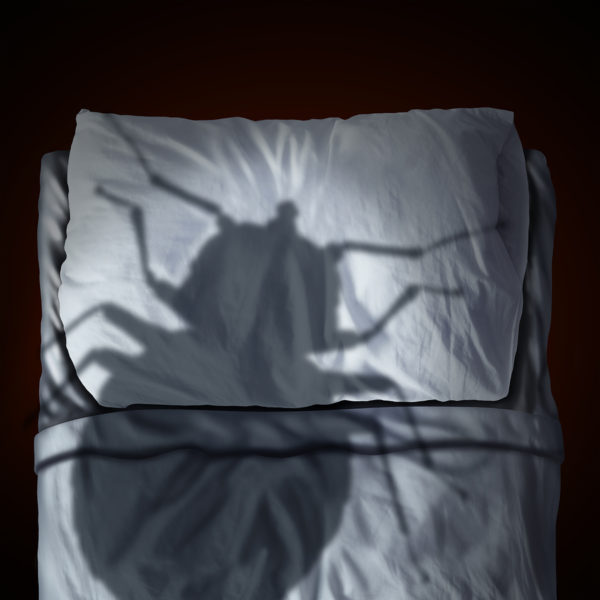
For many of us, the holiday season is a time of joy. It is also a time for travel as we look forward to spending time with family and friends. One thing that can damper our holiday season is dealing with unwanted visitors – no, not that cranky Scrooge of a relative – but bed bugs! Bed bugs are notorious hitchhikers, tagging along with unsuspecting travelers on their clothes and luggage. As we enter the biggest travel season of the year, check out these tips for preventing bed bugs and preserving your holiday cheer.
When you have guests staying with you, make sure you are prepared for the possibility of bed bugs being brought in with them. Don’t put your guests’ coats and bags on the bed. Instead, clean out a closet and use it to store their belongings. If you have to put their items on the bed, lay a sheet down first. It can be cleaned later. Place a plastic mat by the door for them to place their shoes on. If possible, provide luggage racks for them to use to store their belongings on. Use a bed bug mattress cover on any beds your guests will be using. If your guests will be sleeping on the couch, lay a sheet down over it first.
Once your guests leave, make sure to go behind anywhere they kept coats or luggage and clean. Vacuum closets where luggage and coats were kept. Vacuum the beds and couches where they slept. Seal the vacuum bags immediately and dispose of them outside. If you used sheets under luggage or on your couches, wash them in hot water and dry them on high heat. Wash the plastic mat you used for their shoes with hot, soapy water.
Whether you have guests who just left or you are the guest yourself, check your surroundings for signs of bed bugs. Inspect the mattress, box springs, and headboard, especially around edges and seams. Make sure to check couch cushions and chairs, as well. The most common sign of bed bugs is small, rust colored spots. Avoid using dresser drawers if possible. When you arrive at your destination, especially if you have been in a heavily populated area (subway, bus, airport, etc) check your shoes, jackets, hats, and luggage immediately. Be sure to check around zippers and seams. If you spot bed bugs, remove the clothing immediately and wash in hot water and dry on high heat. Vacuum luggage and seal and dispose of the vacuum bag immediately. If you are going to be a guest at a hotel or other lodging accommodation, you can also check the Bed Bug Registry, which is a free user-submitted database of bed bug reports across the US and Canada.
Once you arrive home from your travels, unpack your luggage and change your clothes immediately. Wash everything in hot water and dry on high heat. The heat of the water and air from the dryer will kill any bed bugs that may be lingering around. Once unpacked, vacuum or steam your luggage and seal it in plastic bags or containers. Store your luggage outside the home (in a garage, shed, etc) until you need to use them again.
Bed bugs are resilient and can be extremely difficult to get rid of. If you suspect you have a bed bug problem, call a pest control professional who can come in and provide you with a thorough evaluation and comprehensive treatment plan.
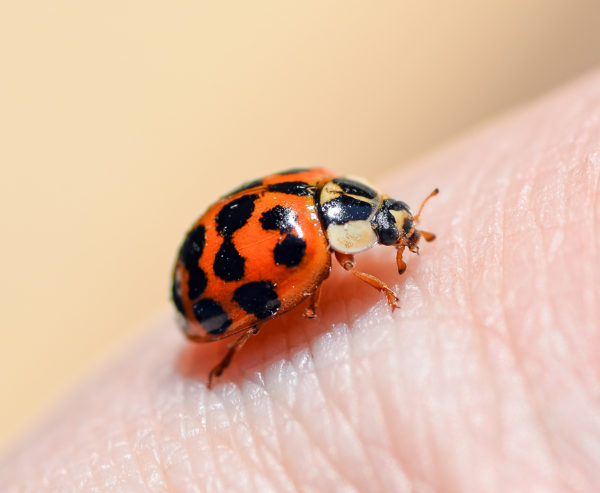
When we think of winter pests we usually think of squirrels, raccoons, rodents, and spiders. Ladybugs aren’t usually at the top of our list, but they are one of the most common winter pests. During the warmer months of the year, ladybug populations grow as they feed on the foliage and aphids. With the onset of colder weather, these food sources diminish, forcing them indoors in search of food and warmth. Ladybugs will seek shelter under rocks, leaves, and timber, and inside buildings and homes.
Ladybugs aren’t considered a threat to humans. However, they have been known to cause allergic reactions in some people and aggravate asthma. They also give off a smelly, yellow colored fluid that stains anything it comes in contact with.
The best way to prevent ladybugs is to eliminate ways for them to get into your home. Make sure the cracks around your windows, doors, siding and utility pipes are sealed. You can use a silicone or silicone-latex caulk to seal. Repair and replace damaged screens on both windows and doors. If you already have ladybugs in your home, the best way to get rid of them is with a vacuum cleaner. Empty the vacuum bag into a trash bag and seal it tightly and dispose of it outside immediately. If you suspect you have a ladybug infestation, contact a professional pest control company to provide you with a thorough evaluation and treatment plan.
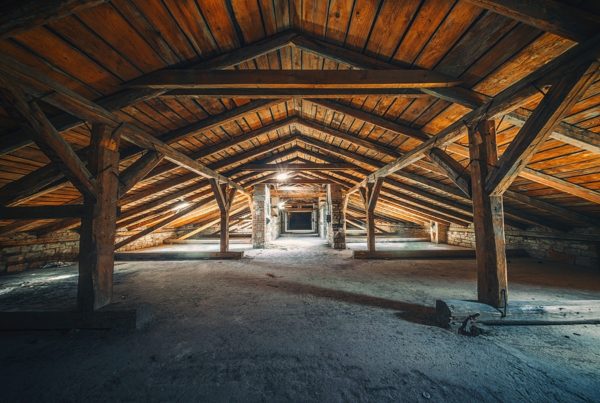
The leaves are changing colors and there’s a chill in the air. Finally! A break from the heat. And while most of us are looking forward to the cooler weather, the change in temperature also means changes in your home. As the weather cools off, it becomes more difficult to regulate your household temperature. And as your heating and cooling system works harder to control the temperature, the increased usage translates into increased utility bills. The is also prime time for wildlife and pests to seek shelter and food inside your home!
Thermal Accoustical Pest Control insulation (TAP) is energy star-rated attic insulation made of 87% recycled newsprint. TAP insulation helps regulate the temperature in your home by keeping them consistent throughout all four seasons of the year. For example, TAP keeps warm air inside and cold air outside during the winter months. By reducing the energy needed to heat and cool your home, utility bills costs can be lowered by up to 30%!
As an added bonus, TAP is treated with borates – a natural pest control product, providing permanent pest protection against roaches, ants and other unwelcome pests in your home. TAP insulation is also treated with a flame retardant that helps limit the spread of fire.
Install TAP insulation in your attic to get these benefits, not only this winter but throughout the rest of the year: